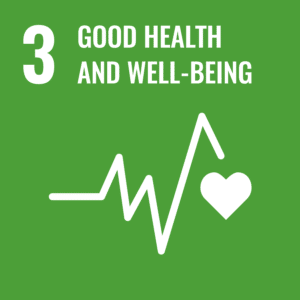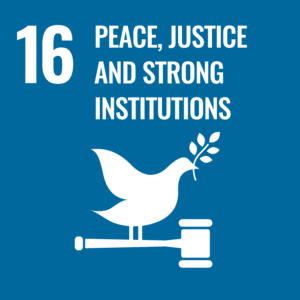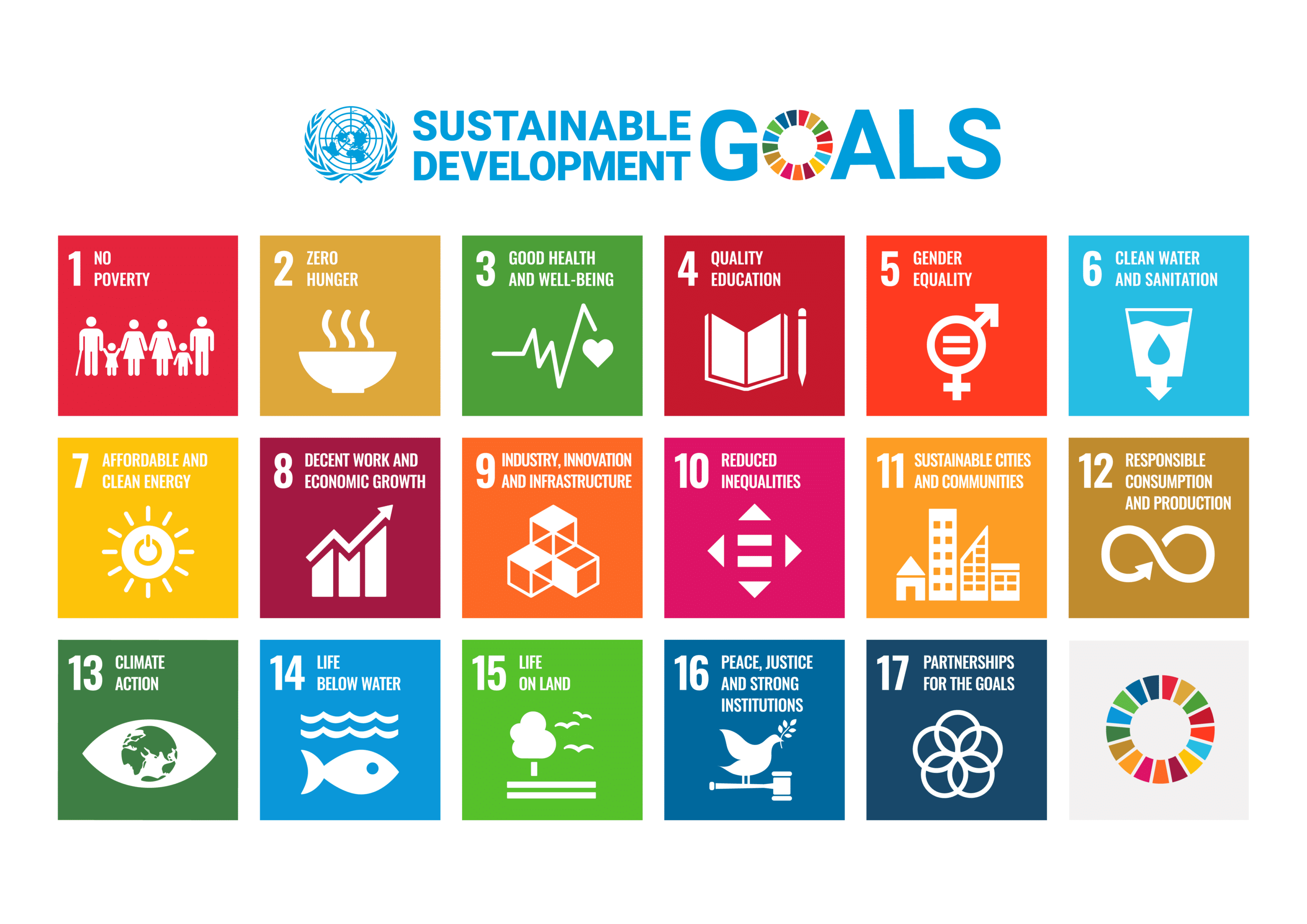Publications
Welcome to CBHRI’s Publication Page
Here you will find an overview of all scientific publications from the Curaçao Biomedical & Health Research Institute.
To make the information more accessible, we have included a public summary for each publication, providing a brief explanation of the research and key findings. Additionally, each publication is linked to the relevant Sustainable Development Goals (SDGs) set by the United Nations.
In 2015, UN member states agreed on 17 SDGs to end poverty, protect the planet, and ensure prosperity for all. Through our research, we aim to contribute to these goals, focusing on health, science, and innovation relevant to the Dutch Caribbean.
Pharmaceutical company funding of cancer patient advocacy organizations in the Netherlands.
J Cancer Policy
2024, Volume 41: 100493.
Authors: Somers AMJ, Duits AJ, Samson MJ, Schnog JB.
Public Summary:
Financial support from pharmaceutical companies to cancer patient advocacy organizations (cPAOs) in the Netherlands is widespread, with over half of these organizations receiving funding. This support, totaling over €1.2 million in 2021 and 2022, may influence the objectivity of cPAOs, especially as they provide input on cancer treatment availability. While some organizations disclose this funding, others do not, raising concerns about transparency. As these groups play a crucial role in shaping public opinion on cancer treatments, it is important to critically assess how pharma sponsorship might affect their perspectives on the value of new oncological drugs.
Contribution to UN Sustainable Development Goals (SDGs)
This research aligns with SDG Goal 3:Good Health and Well-being. It highlights how financial ties between pharmaceutical companies and cancer patient advocacy organizations can undermine the delivery of high-quality cancer care. By promoting transparency, it supports informed healthcare decisions, empowers patients, and ensures access to safe, effective, and equitable treatments while reducing unnecessary healthcare expenses.
Pharmaceutical Industry Payments to Medical Oncologists in the Netherlands: Trends and Patterns Provided by an Open-Access Transparency Data Set.
JCO Oncology Practice
2024, Volume 20: 843-851.
Authors: Schnog JB, Izzy Gerstenbluth, Duits AJ.
Public Summary:
Health care costs for cancer treatments are rising sharply, yet many treatments provide only minimal benefits. One factor contributing to this issue is financial conflicts of interest (fCOI), where payments from pharmaceutical companies to doctors may influence treatment decisions and the approval of low-value treatments. This study examined the extent of such payments to medical oncologists in the Netherlands between 2019 and 2021. We found that nearly 50% of oncologists received payments, totaling almost €900,000. While the number and amount of payments decreased over time, key opinion leaders (KOLs) were more likely to receive higher payments. These findings highlight the need for increased awareness about the potential impact of financial conflicts of interest on medical practices.
Contribution to UN Sustainable Development Goals (SDGs)

This research aligns with SDG Goal 3: Good Health and Well-being by examining pharmaceutical payments to medical oncologists in the Netherlands. It highlights how financial conflicts of interest can influence treatment guidelines and approvals, potentially leading to the use of low-value cancer treatments. By promoting transparency, the study supports equitable access to high-quality care and informed healthcare decisions that prioritize patient well-being.
Design issues with lutetium-177 PSMA-617 registration studies that bias the outcome of the experimental arm reflect an increasing misalignment of contemporary oncology trials with true patient benefit.
BJC Rep
2024, Volume 2(1):45.
Authors: Schnog JB, Duits AJ, Samson MJ.
Public Summary:
Design Flaws in Lutetium-177 PSMA-617 Studies Could Mislead on Its Benefits for Patients, Highlighting Issues in Modern Cancer Trials
The PSMAfore trial tested lutetium-177 PSMA-617, a new treatment for prostate cancer that has spread, in patients who had already received a second-generation androgen receptor signaling inhibitor (ARSI). The trial showed that this experimental treatment improved radiographic progression-free survival compared to another ARSI. However, the trial, like the earlier VISION trial, had several issues, such as using unclear measures of success, outdated treatments in the control group, and potential biases in the results. Approving lutetium-177 PSMA-617 for patients before chemotherapy could expose them to a treatment without proven benefits, leading to unnecessary healthcare spending.
Contribution to UN Sustainable Development Goals (SDGs)


This publication contributes to the advancement of global health and the promotion of ethical healthcare practices, aligning with Goal 3: Good Health and Well-being and Goal 16: Peace, Justice, and Strong Institutions.
By critically evaluating clinical trial designs for chemotherapy-naïve patients with castrate-resistant prostate cancer (CRPC), the study highlights significant concerns about biased trial outcomes, the use of surrogate endpoints, and control treatments that do not reflect contemporary care standards. These findings promote better evidence-based decision-making to ensure patients receive treatments with proven clinical benefits.
Furthermore, the research advocates for greater transparency and accountability in clinical trial practices and pharmaceutical regulations. By emphasizing the importance of responsible healthcare spending and ethical research frameworks, it supports the development of a more just and sustainable healthcare system.
Untoward global effects of current guideline formulation of stereotactic radiotherapy for symptomatic brain metastases by international medical societies.
Lancet Reg Health Am.
2023, Volume 25: 100584.
Authors: de Vocht DECM, Schnog JB, Merkies IS, Samson MJ.
Public Summary:
Recent international guidelines have recommended stereotactic radiosurgery (SRS) as the standard treatment for patients with a limited number of brain metastases and good overall health. However, the evidence supporting its effectiveness is not as strong as it may seem, and this recommendation may have unintended consequences, especially in countries with limited resources. The widespread adoption of this treatment could lead to unequal access to care, potentially overlooking more affordable or suitable options for many patients. This article examines the global impact of these guidelines and emphasizes the need for more balanced, evidence-based recommendations.
Contribution to UN Sustainable Development Goals (SDGs)
An analytical view of the BJH publication of ‘a clinician’s view of voxelotor’.
Br J Haematol
2023, Volume 200(6):e56-e57.
Authors: Schnog JB, Samson MJ, Duits AJ.
Contribution to UN Sustainable Development Goals (SDGs)
Public Summary:
Voxelotor is a new drug for sickle cell disease (SCD) that works by increasing oxygen affinity in red blood cells to prevent sickling, offering hope for better patient outcomes. While it has shown some benefits in clinical trials, including increased hemoglobin levels and a slight reduction in painful episodes, its long-term effects and overall impact on SCD complications are still unclear. Some experts argue voxelotor may not significantly change the course of the disease, and its high cost could make it unaffordable for many patients, especially in resource-limited settings. Concerns about financial conflicts of interest (FCI) in the research, including its sponsorship by the drug manufacturer, suggest that more cautious, unbiased evaluation of the drug’s real-world effectiveness is needed. Thus, while voxelotor is an exciting option, further studies are crucial to fully assess its value for SCD patients.
Financiële belangen en oncologische geneesmiddelen [Financial conflict of interest and anti-cancer drugs: Why the NTVG’s stance to exclude pharma-advertisement is of importance.]
Ned Tijdschr Geneeskd.
2022, Volume 166:D6738.
Authors: Schnog JB, Samson MJ, Duits AJ.
Contribution to UN Sustainable Development Goals (SDGs)
Public Summary:
The growing number of new cancer treatments, many of which provide limited benefits to patients, highlights a concerning issue in medical research: financial conflicts of interest (FCI) with the pharmaceutical industry. These conflicts can influence researchers, medical experts, and even editors of medical journals, leading to the approval of drugs that may not be effective, but generate significant profits for pharmaceutical companies. The decision by the Nederlands Tijdschrift voor Geneeskunde (NTVG) to exclude all pharmaceutical advertisements, including those for industry-sponsored medical education, is a significant step toward addressing these conflicts and ensuring that the relationship between the medical field and the pharmaceutical industry is based on trust and transparency.
Trastuzumab Deruxtecan in HER2-Low Breast Cancer.
N Engl J Med
2022, Volume 387:1143-1144.
Authors: Schnog JB, Samson MJ, Duits AJ.
Contribution to UN Sustainable Development Goals (SDGs)
Public Summary:
Promising New Treatment for Advanced Breast Cancer
A recent study tested a drug called trastuzumab deruxtecan for patients with advanced breast cancer that has low levels of the HER2 protein. The results were promising: 52.3% of patients responded to the treatment, and they lived longer without the disease getting worse compared to those receiving standard chemotherapy.
These findings have sparked excitement in the medical field and provide hope for many patients. If approved, this treatment could become a valuable option for people with HER2-low breast cancer, offering better outcomes and new possibilities in care.
Contemporary oncology trials, drug approvals and the physician-patient relationship.
The Lancet Regional Health-Americas
2022, Volume 11:100247.
Authors: Schnog JB, Samson MJ, Duits AJ.
Contribution to UN Sustainable Development Goals (SDGs)
Public Summary:
Improving Cancer Care: The Need for Better Drug Trials and Honest Communication
Many cancer treatments approved today are expensive but provide little to no real benefit for patients. This problem is made worse by flawed clinical trials, particularly in lower-income countries, where patients often receive substandard care as part of the trial. These poor results are then used to justify drug approvals in wealthier countries, despite the lack of meaningful benefits.
Doctors often face a difficult situation. They know these treatments have limited value but must deal with patients’ high expectations created by aggressive marketing. This can harm the trust between doctors and patients and even lead to legal issues when doctors refuse ineffective treatments.
To improve cancer care, we need stronger regulations for drug approvals and better education for doctors about choosing treatments that truly help patients. Only then can we ensure that both patients and society benefit from high-quality, meaningful medical care.
Long-term Chikungunya sequelae and quality of life 2.5 years post-acute disease in a prospective cohort in Curaçao
PLoS Negl Trop Dis.
2022, PLoS Negl Trop Dis 16(3): e0010142
Authors: Churnalisa Doran, Jelte Elsinga, Ante Fokkema, Kevin Berenschot, Izzy Gerstenbluth, Ashley Duits, Norediz Lourents, Yaskara Halabi, Johannes Burgerhof, Ajay Bailey, Adriana Tami.
Contribution to UN Sustainable Development Goals (SDGs)
Public Summary:
Long-Term Effects of Chikungunya on Health and Well-Being
Chikungunya often begins with flu-like symptoms and joint pain, but its long-term effects are less understood. In this study, researchers followed patients in Curaçao for 2.5 years after infection. They found that 57% of patients continued to experience symptoms, including fatigue, insomnia, mood issues, and joint pain.
These persistent symptoms significantly impacted patients’ quality of life. The study also introduced a tool called the CLTCS score to help identify patients with severe long-term effects. The findings suggest the need for a holistic approach to care, addressing both physical and mental health challenges linked to chikungunya.
An urgent call to raise the bar in oncology.
Br J Cancer.
2021, Volume 125:1477-1485.
Authors: Schnog JB, Samson MJ, Gans ROB, Duits AJ.
Contribution to UN Sustainable Development Goals (SDGs)
Public Summary:
Rethinking Cancer Treatments for Better Care
While medical advancements have improved cancer treatments, many approved therapies offer little benefit, leading to false hopes for patients and rising healthcare costs. This study highlights issues like biased clinical trials, lenient drug approvals, and high drug prices.
The COVID-19 pandemic showed the importance of focusing on effective treatments. The authors call for improvements in clinical research, stricter drug regulations, and value-based assessments to ensure cancer patients receive treatments that truly make a difference.
Rapid Identification of Druggable Targets and the Power of the PHENotype SIMulator for Effective Drug Repurposing in COVID-19
Res Sq
2021, Apr 14:rs.3.rs-287183. doi: 10.21203/rs.3.rs-287183/v1. Preprint.PMID: 33880466
Authors: Maria N, Rapicavoli RV, Alaimo S, Bischof E, Stasuzzo A, Broek J, Pulvirenti A, Mishra B, Duits A, Ferro A.
Contribution to UN Sustainable Development Goals (SDGs)
Public Summary:
Discovering New Treatments for COVID-19 Using Advanced Computer Models
Finding effective drugs for COVID-19 remains challenging as the virus continues to evolve. Repurposing existing drugs offers a quicker solution. This study presents a powerful tool called the PHENotype SIMulator, which uses computer models to simulate how SARS-CoV-2 affects human cells.
The tool helps researchers identify how the virus impacts the immune system and pinpoint potential treatments. With this approach, drugs like methylprednisolone and metformin have been highlighted as promising options. This research paves the way for faster drug discovery and more effective COVID-19 treatments.
Quality Improvement in a small‐scale Caribbean Blood Bank: the value of long‐term collaboration and stepwise process approach
ISBT Science Series
Volume 16, Issue 4 First published: 29 March 2021
Authors: Ashley J. Duits, Luigi Sillé, Willem M. Smid
Contribution to UN Sustainable Development Goals (SDGs)
Public Summary:
Improving Blood Bank Quality in Curaçao Through Collaboration
Ensuring safe blood transfusions requires strict quality standards, which can be challenging in small Caribbean settings. The Red Cross Blood Bank Foundation in Curaçao partnered with Sanquin Consulting Services to implement a step-by-step quality improvement programme based on EU standards.
Over 10 years, this approach led to key improvements, such as better testing methods, structured management, and effective handling of emerging infectious diseases. Collaboration and strong communication proved essential for success.
This study shows that with a gradual, well-planned strategy and teamwork, small blood banks can achieve sustainable improvements in safety and quality.
Neurologic sequelae of severe chikungunya infection in the first 6 months of life: a prospective cohort study 24-months post-infection
BMC Infect Dis
2021, 21, 179 .
Authors: van Ewijk R, Huibers MHW, Manshande ME, Ecury-Goossen GM, Duits AJ, Calis JC, van Wassenaer-Leemhuis AG.
Contribution to UN Sustainable Development Goals (SDGs)
Public Summary:
Chikungunya Infection in Infants: Long-Term Effects on Development
Chikungunya is a disease spread by mosquitoes, usually causing fever and joint pain. While older children and adults typically recover without lasting effects, little is known about the impact on infants.
This study followed 18 infants in Curaçao who were infected with chikungunya before six months of age during the 2014–2015 outbreak. Two years later, 72% of the children showed developmental challenges, including cognitive, motor, or social-emotional difficulties.
These findings highlight the need for special care during outbreaks to protect young infants and follow-up care for those infected to monitor their development. More research is needed to better understand the long-term effects.
Community participation in mosquito breeding site control: an interdisciplinary mixed methods study in Curaçao
Parasites & Vectors
2017, Volume 10:434
Authors: Jelte Elisinga, Henry T. van der Veen, Izzy Gerstenbluth, Johannes G. M. Burgerhof, Arie Dijkstra, Martin P. Grobusch, Adriana Tami and Ajay Bailey.
Public Summary:
Community Involvement in Mosquito Control: Insights from Curaçao
As diseases like dengue, chikungunya, and Zika spread across the Americas, controlling mosquito breeding sites has become crucial. This study explored how communities in Curaçao participate in mosquito control and how efforts can be improved.
The research found that most people understood and practiced ways to reduce mosquito breeding, such as managing stagnant water sources. However, fewer people used personal protection like mosquito repellents. Some barriers to participation included a lack of government support, uncertainty about effective practices, and misconceptions about mosquito-borne diseases.
The study suggests three ways to improve community engagement:
- Increase public awareness through ongoing media campaigns to address misconceptions.
- Highlight and promote government mosquito control efforts to encourage residents to take responsibility for their own properties.
- Involve key community members in mosquito control initiatives to inspire neighborhood action.
By closing the gap between policy and community practices, these strategies can lead to more effective mosquito control and help reduce the spread of diseases in Curaçao.
Health-related impact on quality of life and coping strategies for chikungunya: a study in Curaçao
PLOS Neglected Tropical Diseases
2017, Volume 11(10): e0005987
Authors: Jelte Elisinga, Martin P. Grobusch, Adriana Tami, Izzy Gerstenbluth and Ajay Bailey.
Contribution to UN Sustainable Development Goals (SDGs)
Public Summary:
Living with Chikungunya: How it Affects Daily Life and Coping in Curaçao
Chikungunya, a mosquito-borne virus often starts with fever-like symptoms but can lead to long-term joint pain for many people. This study explored how the disease impacted daily life and how individuals in Curaçao coped with its effects. Many reported persistent pain, limited mobility, and challenges in daily activities often feeling dependent, moody, or uncertain about their future. While some found relief through medical treatments. These findings highlight the need for doctors and health authorities to support better coping strategies for patients living with chronic Chikungunya symptoms.
Hyperferritinemia is a potential marker of chronic chikungunya: a retrospective study on the Island of Curaçao during the 2014-2015 Outbreak
Journal of Clinical Virology
2017, Volume 18: 31-38
Authors: Fatih Anfasa, Lisette Provacia, Corine Geurts van Kessel, Robert Wever, Izzy Gerstenbluth, Albert D. M. E. Osterhaus and Byron E. E. Martina.
Contribution to UN Sustainable Development Goals (SDGs)
Public Summary:
Understanding Chikungunya Outbreak and Chronic Joint Pain in Curaçao during the 2014-2015 outbreak
The chikungunya virus (CHIKV) outbreak in Curaçao was caused by the Asian genotype strain. Researchers identified elevated ferritin levels (a blood protein) as a potential indicator for the development of long-lasting joint pain, a common complication of chikungunya infection. This finding suggests that ferritin could be used as a marker to predict which patients might develop chronic symptoms, helping healthcare providers manage and treat cases more effectively.
The pathogenesis of chronic chikungunya: evolving concepts
Future Virology
2016, Issue: 11.1: 61-77
Authors: Roosenhoff, Rueshandra, Fatih Anfasa, and Byron Martina.
Contribution to UN Sustainable Development Goals (SDGs)
Public Summary:
Chikungunya Virus and Chronic Arthritis: What We Know and What’s Next
The chikungunya virus (CHIKV) has re-emerged, causing outbreaks in the Caribbean and the Americas. While many people recover fully, the virus can cause long-lasting joint pain similar to rheumatoid arthritis, which may persist for months or even years. This review explores how CHIKV might trigger chronic arthritis, possibly through ongoing virus activity in the joints that fuels inflammation. Understanding these processes could pave the way for better treatments and vaccines that not only fight the virus but also protect joint health.




